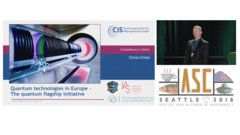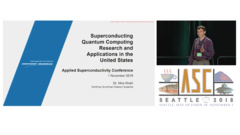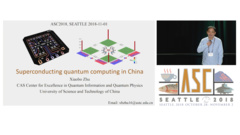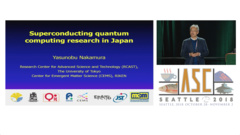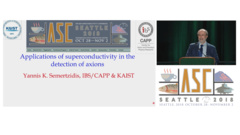30 Years to High Temperature Superconductivity (HTS): Status and Perspectives
Perspectives on 30 years of High Temperature Superconductivity. The aim of this presentation from the Applied Superconductivity Conference 2016, is to illustrate the close synergetic relationship between evolution of the material understanding and advancement in the superconductor technology.
The discovery of high temperature superconductivity by Bednorz and Muller in 1986 inaugurated a new era for research, from both fundamental physics and application perspectives. With Tc routinely around 100 K (the record is 160 K) and Bc2 reaching into tens or even hundreds of tesla, the technological significance of HTS appeared clear from the very beginning. However, scientists had to face many difficulties to develop these materials in a useful conductor form, and yet only three Bi2Sr2CaCu2O8-x, Bi2Sr2Ca2Cu3O10-x and REBa2Cu3O7-x (RE = rare earth) are available commercially. The grand challenges revolve around the complexity of making high Jc in polycrystalline materials, because of the intrinsic electronic anisotropy and of the great current blocking effects of randomly oriented grain boundaries. This review describes many aspects of the development and property evolution in HTS conductors together with the progresses in practical applications.
Perspectives on 30 years of High Temperature Superconductivity. The aim of this presentation from the Applied Superconductivity Conference 2016, is to illustrate the close synergetic relationship between evolution of the material understanding and advancement in the superconductor technology.
 Cart
Cart Create Account
Create Account Sign In
Sign In

